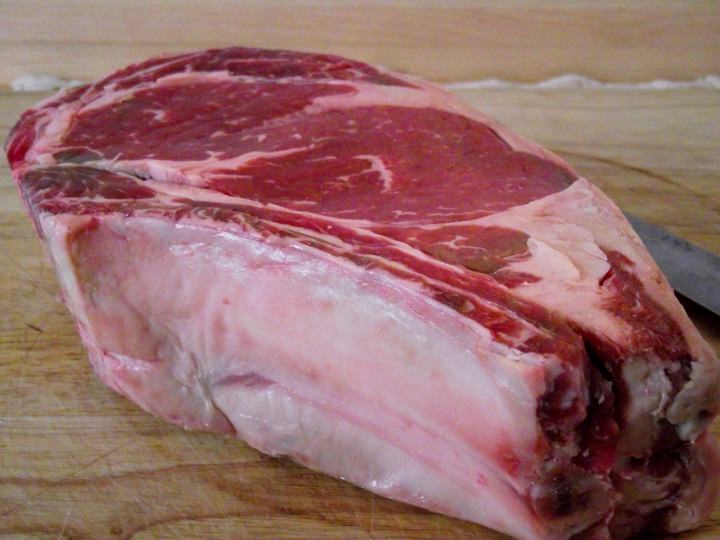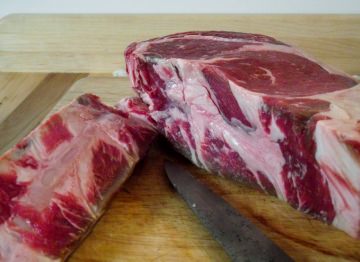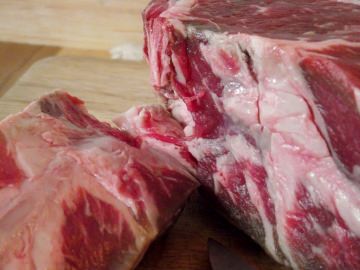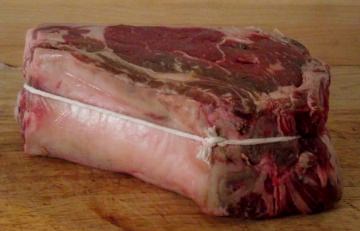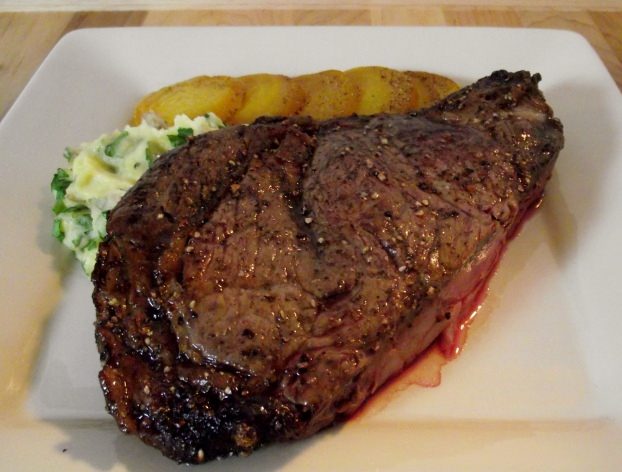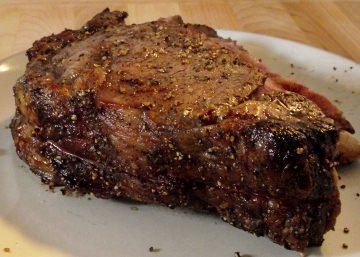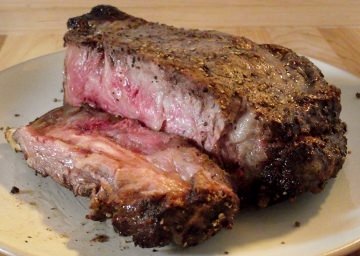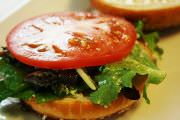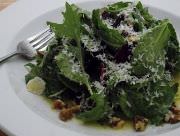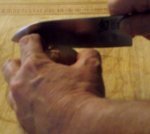Rib Eye Roast
Prime rib, standing rib roast, or ribeye roast whichever name you prefer this is one delicious cut of meat. Characteristically there is a lot of marbling through the meat and the meat itself is very tender. It comes from the rib section of the animal as do the rib steaks and back ribs.
Interestingly, you would think that all of the same cuts of meat are available anywhere you go, and to a point you would be right. However, in some regions there are cuts that just aren't available elsewhere. Another problem is that the cut may be available but the name changes, or the cut is available but they cut it from another part of the animal.
The Delmonico steak is a very good example. Delmonico's was a restaurant that closed in the 1920's. They had a steak on thier menu called The Delmonico. Unfortunately no one is alive that can identify where the steak was cut from. On the East Coast it is cut from the rib section. On the West Coast it is cut from the chuck section.
This is a link to some Cut Charts on Bing, if you want to see where rib eye roast comes from, or any other cut of meat, for that matter.
Prepare The Roast
Unwrap the roast and blot the surface with paper towels until it is dry to the touch. Using a utility or boning knife run the blade up along the line of the bone until only a small portion, about a half inch, or 1 centimeter, is still attached.
The bone has been completely removed, except for a small section at the top where it is still attached.
This step can be completed ahead of time. You can do this when you get it home from the store or wait until you are ready to go in the oven, it makes no difference.
From step 7 below: Move the bone back into position and secure it with butcher's twine.
There is a good chance your butcher or meat counter has already done this for you. If so, then you don't have to do it. If the butcher did the job for you the bone will be attached all along the top edge, and the roast will be tied.
How To Cook Prime Rib Or Rib Eye Roast
- Yield: 2 to 3 servings
- Prep Time: 15 minutes
- Cook Time: Varies depending on desired temperature
Equipment
- Roasting rack and drip pan
- Butcher's twine
- Mortar and pestle
- Probe thermometer
Ingredients
- 2-1/2 pound / 1 Kg standing rib roast
- 3 Tbsp / 45 ml pork lard, divided
- 1 Tbsp / 6 grams peppercorns, or to taste
- 2 Tsp / 10 grams smoked salt, or to taste
Method
- 1 to 2 hours before cooking, remove the prime rib from the refrigerator, and let rest on the counter.
- Preheat oven to 450° F / 230° C.
- Add half the pork lard to a small saucepan and set over low heat to soften and partially melt.
- Meanwhile, add the peppercorns and smoked salt to the mortar and crack the pepper with the pestle. Keep working the salt and pepper until you have a coarse grind.
- In a small bowl add the remaining lard, the salt and pepper, and the melted lard. Using a fork, work it into a paste. Set aside.
- Unwrap the roast and blot the surface with paper towels until it is dry to the touch. Using a utility or boning knife run the blade up along the line of the bone until only a small portion, about a half inch or 1 centimeter is still attached.
- Gently separate the bone from the meat and rub some of the lard mixture along the cut side. Move the bone back into position and secure it with the butcher's twine. Rub the remaining lard mixture over the roast making sure to thoroughly and evenly coat the roast.
- Insert the temperature probe into the center of the roast. Make certain to set the temperature on the thermometer to your desired temperature or degree of doneness.
- Transfer the roast to the roasting pan and place on the center rack of the oven.
- If you want to cook your roast to medium or more, reduce the heat to 375° F / 190° C.
- Roast until the thermometer registers your desired degree of doneness. 120° F / 49° C to 125° F / 52° C for rare, 125° F / 52° C to 130° F / 55° C for medium rare, 130° F / 55° C to 135° F / 57° C for medium, 135° F / 57° C to 140° F / 60° C for medium well, and 145° F / 63° C for well done.
Notes
- Pork lard substitutions: bacon fat, beef tallow,
- If you don't have a mortar and pestle you can use a pepper grinder to crack the peppercorns and use the salt as is.
- Slicing the bone before cooking makes it a great deal easier to remove the bone once it is cooked. You certainly don't have to. However, if you do, make certain to tie the bone back in place.
- The high oven heat creates a fast Maillard reaction and a fast caramelization.
For Clarity
- Rare - 120° F / 49° C to 125° F / 52° C
- Medium Rare - 125° F / 52° C to 130° F / 55° C
- Medium - 130° F / 55° C to 135° F / 57° C
- Medium Well - 135° F / 57° C to 140° F / 60° C
- Well - 145° F / 63° C
